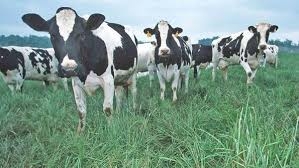Milk industry development plan of Vietnam
Wednesday, June 28,2017
AsemconnectVietnam - To improve the competitive capacity of the milk industry and apply advanced technologies and techniques; to develop the industry in an open direction and flexible manner with diversified milk products.
|
Product
|
2015 – 2020
|
|
Condensed milk
|
1%
|
|
Powder milk
|
10%
|
|
Pasteurized fresh milk
|
20%
|
Table 2. Vietnam’s milk production projection by 2020 (fresh milk basis):
|
Targets
|
Unit
|
2015
|
2020
|
Annual growth (%)
|
|
1. Domestic milk consumption
|
2015-2020
|
|||
|
- Population
|
Thousand people
|
93.352
|
99.587
|
|
|
- Milk consumption per capita
|
Litters
|
8
|
10
|
|
|
- Domestic milk consumption
|
Thousand liters
|
667,000
|
900,000
|
6.2
|
|
2. Milk exports:
|
2015-2020
|
|||
|
- Powder milk
|
Tons
|
44,000
|
56,000
|
5
|
|
(Fresh milk basis)
|
Thousand liters
|
330,000
|
420,000
|
|
|
- Condensed milk
|
Thousand tins
|
1,104
|
1,219
|
2
|
|
(Fresh milk basis)
|
Thousand liters
|
1,104
|
1,219
|
|
|
Total
|
Thousand liters
|
998,104
|
1,321,219
|
5.8
|
Table 3. Vietnam’s dairy herd by 2015 and 2020
|
Region, city and province
|
2015
|
2020
|
||
|
Total dairy herd
|
Number of cows
|
Total dairy herd
|
Number of cows
|
|
|
1
|
2
|
3
|
4
|
5
|
|
I. East of Southern Vietnam
|
61,103
|
27,499
|
78,591
|
35,365
|
|
Lam Dong Province
|
4,533
|
2,000
|
7,385
|
3,300
|
|
1
|
2
|
3
|
4
|
5
|
|
II. West of Southern Vietnam
|
9,913
|
4,461
|
26,011
|
11,696
|
|
III. South of Central Vietnam
|
9,578
|
4,310
|
32,270
|
14,508
|
|
IV. North of Northern Vietnam
|
12,500
|
5,625
|
39,500
(20,500)
|
17,775
(9,225)
|
|
V. East of Northern Vietnam
|
21,217
|
9,545
|
49,100
|
22,095
|
|
VI. Northern highlands
|
18,917
|
8,512
|
38,382
|
17,270
|
|
Total
|
137,761
|
61,952
|
252,239
|
113,459
|
Table 4. Investment capital for the development of Vietnam’s milk industry by 2020
|
No.
|
Items
|
2015
|
2020
|
|
1
|
Development of raw materials used for making feeds for dairy cattle
|
45
|
100
|
|
2
|
Capital for dairy herd development
|
1,000
|
1.000
|
|
3
|
Capital for running milk procurement stations
|
51.2
|
101.6
|
|
4
|
Investment capital for building milk plants
|
901.25
|
993.75
|
|
|
Total
|
1,997.45
|
2,195.35
|
Long Giang
Source: www.mpi.gov.vn
Program on conservation and development of Vietnamese craft villages in a period of 2021 - 2030
Implementation plan of marine aquaculture development project in Ninh Binh province to 2030 with a vision to 2045
Plan on implementing national environmental protection strategy to 2030 with a vision to 2050 in Kien Giang province
Plan on implementing Decision No. 327/QD-TTG dated March 10, 2022 of the Prime Minister approving the project on developing sustainable and effective wood processing industry in the period of 2021-2030 in Gia Lai province
Action plan on implementing strategy of sustainable agricultural and rural development in a period of 2022-2030 with a vision to 2050 in Hanoi city
Plan on implementing Decision No.923/QD-TTG dated August 2, 2022 of the Prime Minister approving science and technology program for new rural construction in a period of 2021-2025 in Vinh Long province
Plan on implementing strategy of sustainable agricultural and rural development in Bac Kan province in a period of 2021 - 2030 with a vision to 2050
Action plan on implementing livestock development strategy in a period of 2022-2030 with a vision to 2045 in Hanoi city
Implementation plan of Vietnam's forestry development strategy for a period of 2021-2030 with a vision to 2050 in Gia Lai province
National master plan in a period of 2021-2030, vision to 2050
Program on strengthening environmental protection, food safety and rural clean water supply in building new countryside in a period of 2021-2025
Digital transformation program on building new countryside, towards smart new countryside in a period of 2021 - 2025
Rural tourism development program on new rural construction in a period of 2021 - 2025
Project on development of trade, e-commerce systems and border trade in Binh Phuoc province in a period of 2021-2025, orientation to 2030

Plan on implementing Decision No. 327/QD-TTG dated March ...
Concretize viewpoints, objectives, tasks and solutions of the plan in accordance with practical conditions of the locality, associating ...Plan on implementing national environmental protection ...
Implementation plan of marine aquaculture development ...
Program on conservation and development of Vietnamese ...
Plan on improving quality of human resources to 2025 and ...

Efforts taken to turn culinary culture into national ...
The Vietnam Cuisine Culture Association (VCCA) is taking steps to implement a project to build and develop Vietnamese culinary culture ...Vietnamese cuisine making a name for itself with ...
Vietnam advance to next round of AFC U20 Women’s Asian Cup
Cultural tourism and traditional values promoted through ...



